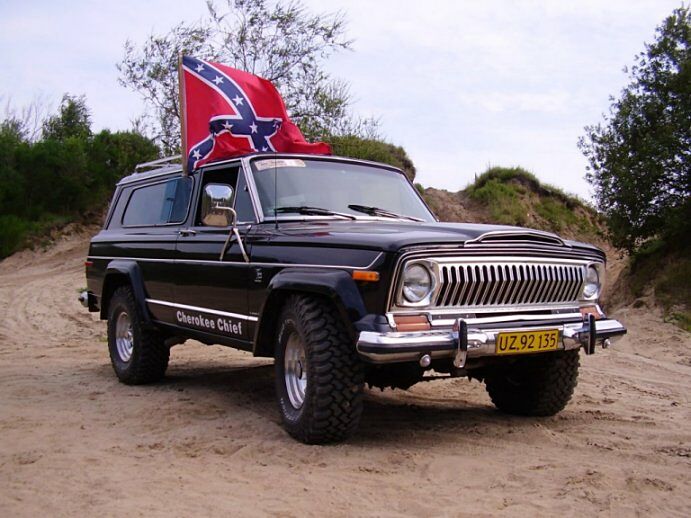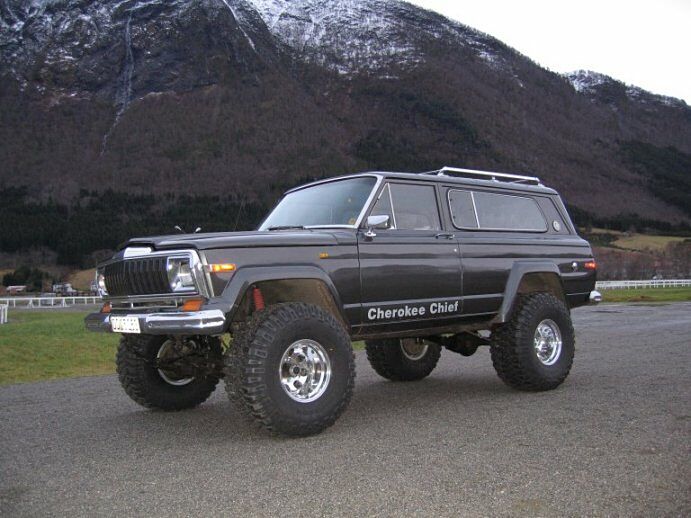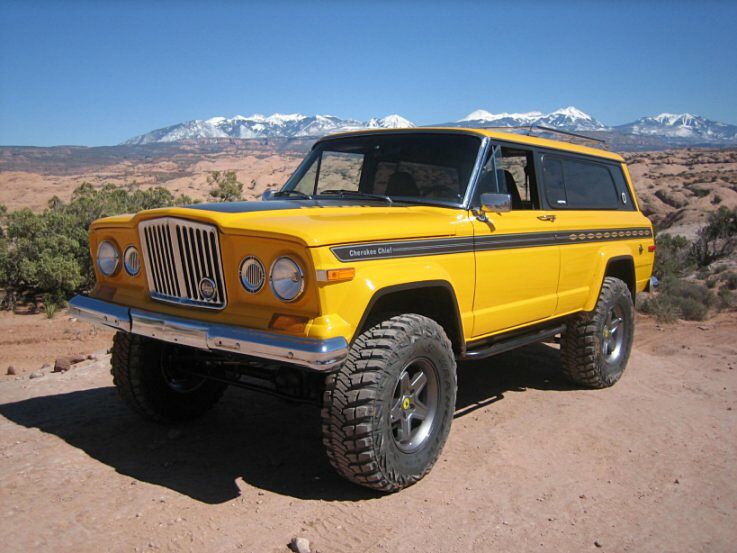SJ Cherokees

- Development
- Performance
- Mechanicals
The SJ series Jeep Cherokee was a full-size SUV produced from 1974 through 1983 by the Jeep division of the American Motor Company (AMC). It was similar to the Wagoneer.
The Cherokee was a redesigned reintroduction of a two door body style, with a single fixed rear side window with an optional flip-out section. Previously, a two door version had been available in the Jeep Wagoneer line (1963–67), although this had the same pillar and window configuration as the four-door Wagoneer.
Based on the Wagoneer, the Cherokee was marketed as the "sporty" two-door variant of Jeep's station wagon. A four-door was not added to the lineup until 1977. Other than the base model, the trim levels of the Cherokee included the S (Sport), Chief, Golden Eagle, Limited, Classic, Sport, Pioneer, and Laredo.
Engine choices consisted of AMC I6 or V8powerplants. When it was equipped with the powerful 401 cu in (6.6 L)AMC V8 engine, it would out-run just about any other 4x4 in its class, and, with 3.07:1 highway gearing, could reach speeds in excess of 100-mile-per-hour (161 km/h) (early models had 120 mph speedometers). A range of AMC engines were offered: the 258 cu in (4.2 L) inline six-cylinder, a 360 cu in (5.9 L) V8 with two-barrel carburetor, a four-barrel 360, or the 401 cu in (6.6 L) V8. The durable 401 had a forged crankshaft and forged connecting rods, as well as the high nickel content block of the other AMC V8s. The 401 was discontinued at the end of 1978.
A T-18/T-18a four speed manual gearbox was standard for all years, while through 1979 the Turbo Hydro Metric TH400, more commonly fitted to 3/4- and 1-ton trucks rather than SUVs, was optional. For comparison, the Chevy Blazer used the TH350 automatic. After 1979, the TH400 was replaced by the Torque Flight 727.
A gear-driven Dana 20 transfer case with was standard with the manual gearbox while the TH400 automatics received the permanent four-wheel drive system. The chain-driven, aluminum Quadra track was quite advanced at the time it included a vacuum operated center differential lock. The transfer case was offset, allowing it to sit just above the frame to avoid obstacles, and the chain itself is larger than nearly any other test by the Four-Wheel Drive Book found that the Cherokee was the only vehicle unable to be dynode because the transfer case would not allow the rear wheels to spin, unlike the other full-time four-wheel drive vehicles being tested. In the off-road test, the same held true.

